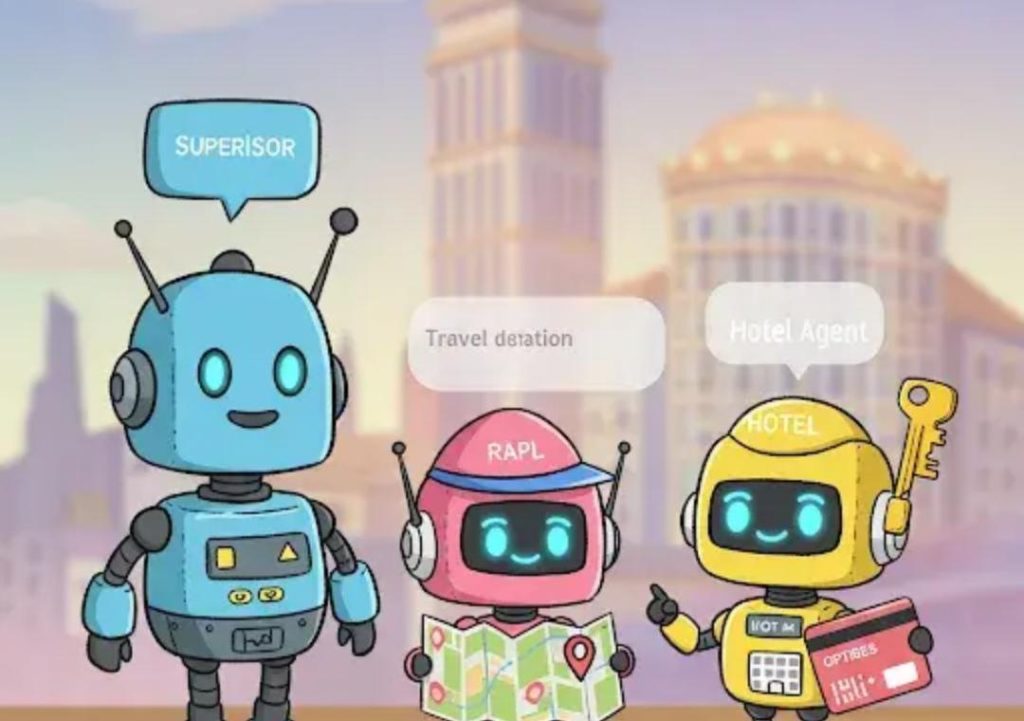
Multi-agent Collaboration Mimics Real Team Dynamics
In the world of artificial intelligence, there’s no denying the importance of collaboration. Just as humans work together in teams to achieve common goals, AI agents can be designed to do the same. But what if instead of relying on a single AI agent, we deployed a full team? Multi-agent systems allow different agents to specialize, communicate, and collaborate across tasks—like research, validation, and reporting. This modular setup creates digital workflows that mirror human teamwork, but at machine speed and scale.
The concept of multi-agent systems is not new, but its applications are vast and varied. In the past, we’ve seen AI agents used in areas such as customer service, data analysis, and even gaming. However, the idea of deploying multiple agents to work together is still relatively untapped. This is where the power of multi-agent collaboration comes in.
The Benefits of Multi-agent Collaboration
So, what are the benefits of deploying multiple AI agents to work together? The answer lies in the ability of each agent to specialize in a specific task or set of tasks. This allows for greater efficiency, accuracy, and scalability.
For example, in the field of research, a team of AI agents could be deployed to gather and analyze data, identify patterns, and make predictions. Each agent would be responsible for a specific task, such as data collection, data analysis, or data visualization. This would not only speed up the research process but also increase its accuracy.
Another benefit of multi-agent collaboration is the ability to communicate and interact with each other. This is often referred to as “agent-based communication.” In this scenario, each agent would be able to share its findings, insights, and recommendations with the other agents, allowing for a more comprehensive understanding of the problem or task at hand.
Real-world Applications of Multi-agent Collaboration
So, how can we apply the concept of multi-agent collaboration in real-world scenarios? The possibilities are endless, but here are a few examples:
- Autonomous vehicles: In the field of autonomous vehicles, multiple AI agents could be deployed to work together to navigate roads, detect obstacles, and make decisions. Each agent would be responsible for a specific task, such as sensor data collection, obstacle detection, or route planning.
- Healthcare: In the field of healthcare, a team of AI agents could be deployed to analyze medical data, diagnose diseases, and develop treatment plans. Each agent would be responsible for a specific task, such as data analysis, diagnosis, or treatment planning.
- Customer service: In the field of customer service, a team of AI agents could be deployed to handle customer inquiries, resolve issues, and provide recommendations. Each agent would be responsible for a specific task, such as customer interaction, issue resolution, or product recommendation.
- Supply chain management: In the field of supply chain management, a team of AI agents could be deployed to track inventory levels, optimize logistics, and predict demand. Each agent would be responsible for a specific task, such as inventory tracking, logistics optimization, or demand prediction.
Challenges and Limitations of Multi-agent Collaboration
While the benefits of multi-agent collaboration are numerous, there are also challenges and limitations to consider. Some of the key challenges include:
- Agent coordination: One of the biggest challenges of multi-agent collaboration is agent coordination. This involves ensuring that each agent is working together seamlessly, without conflicts or overlaps.
- Communication: Another challenge is communication. Agents must be able to communicate effectively with each other, sharing their findings, insights, and recommendations.
- Scalability: As the number of agents increases, scalability becomes a major challenge. Agents must be able to handle large amounts of data and processing power.
- Trust and reputation: Finally, there’s the issue of trust and reputation. Agents must be able to trust each other and establish a reputation for reliability and accuracy.
Conclusion
In conclusion, multi-agent collaboration mimics real team dynamics, allowing AI agents to specialize, communicate, and collaborate across tasks. This modular setup creates digital workflows that mirror human teamwork, but at machine speed and scale. While there are challenges and limitations to consider, the benefits of multi-agent collaboration are undeniable.
As we move forward in the world of AI, it’s clear that multi-agent collaboration will play a major role in many areas of our lives. From autonomous vehicles to healthcare, customer service to supply chain management, the possibilities are endless.
News Source



